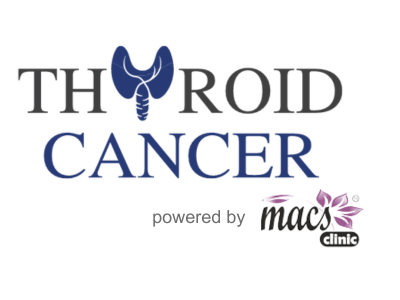
A goiter is more than just visible swelling in your neck—it is a clear sign that your thyroid gland may not be working properly. With varied origins like iodine imbalance or autoimmune conditions, goiters can present with a range of symptoms affecting your daily life. Understanding goiter symptoms and causes is vital for early detection and effective management.
Dr. Sandeep Nayak, a surgical oncologist in Bangalore, has contributed to the field of thyroid surgery.. He has developed techniques such as Robotic-Assisted Breast-Axillo Insufflated Thyroidectomy (RABIT) and Robotic Infraclavicular Approach for Minimally Invasive Neck Dissection (RIA-MIND). These minimally invasive surgeries aim to reduce visible scarring and improve precision in the treatment of head and neck cancers, including some thyroid disorders.
What Is a Goiter?

A goiter is an enlarged thyroid gland at the base of the neck. The butterfly-shaped thyroid gland secretes hormones essential to metabolism, growth, and regulation of body temperature. When this gland becomes enlarged—either due to inflammation, hormonal disbalance, or lack of iodine—it forms a palpable or visible swelling. Goiters are of different types:
- Diffuse goiter: Uniform enlargement of the thyroid tissue.
- Nodular goiter: One or more lumps (nodules) develop inside the gland.
- Toxic vs. non-toxic goiter: Indicates whether thyroid hormone levels are abnormal.
- Endemic goiter: Occurs where dietary iodine is low.
If you notice changes in your thyroid health, consult a qualified healthcare professional for advice.
Common Symptoms of Goiter

It is essential to recognize the most common symptoms of thyroid goiter, which include:
- Visible neck swelling or lump that may grow gradually.
- Sensation of tightness around the neck or throat.
- Difficulty swallowing or breathing, especially if the goiter presses on the esophagus or windpipe.
- Hoarseness or changes in voice, when pressure affects vocal cords.
- Symptoms of hypothyroidism (underactive thyroid): fatigue, weight gain, cold intolerance, dry skin.
- Symptoms of hyperthyroidism (overactive thyroid): weight loss, nervousness, heat intolerance, rapid heartbeat.
Women may notice these signs more often, as thyroid conditions are more common in females, partly due to hormonal changes. Understanding the difference between goiters caused by hypothyroidism and hyperthyroidism helps guide appropriate treatment.
What Causes a Goiter?

The causes of goiter include:
- Iodine deficiency: Often the most common cause globally—iodine is essential for thyroid hormone production.
- Autoimmune disorders:
o Hashimoto’s thyroiditis leads to hypothyroidism goiter.
o Graves’ disease causes hyperthyroidism goiter.
- Thyroid nodules: Benign growths like colloid nodules or thyroid cysts can expand the gland.
- Thyroid cancer: Rarely—but sometimes nodules indicate malignancy.
- Medications: Drugs like lithium can interfere with thyroid function.
- Pregnancy or puberty: Hormonal shifts may temporarily enlarge the thyroid.
Remember, each cause leads to different types of goiters—knowing the root cause is key to effective therapy.
If you experience persistent discomfort or visible changes in your neck, consult a qualified doctor for evaluation.
Who Is at Risk for Developing a Goiter?
Certain groups have a higher risk:
- People in iodine-deficient regions or with poor dietary iodine intake.
- Those with family history of thyroid issues or autoimmune disorders.
- Women, particularly middle-aged—thyroid gland enlargement is more common in females.
- Individuals with chronic autoimmune diseases, like lupus or type 1 diabetes.
- People taking certain medications like amiodarone or lithium.
- Pregnant women, due to increased thyroid demand.
- Those who have undergone radiation treatment around the neck.
When to See a Doctor

Look for these warning signs:
- Rapidly enlarging goiter, especially over weeks.
- Difficulty breathing or swallowing—a sign of significant enlargement.
- Persistent voice changes, like hoarseness.
- Signs of overt thyroid dysfunction, such as palpitations or profound fatigue.
- Visible bulge in the neck that doesn’t shrink.
- Unexplained weight loss or gain, particularly with energy fluctuations.
Conclusion
Advances in thyroid care, like minimally invasive procedures, are transforming how goiters are managed today. Minimally invasive procedures are transforming how goiters are managed today. Techniques such as those developed by Dr. Sandeep Nayak aim to improve precision and recovery in thyroid surgery. Individual results may vary. Consult a qualified doctor for personalized advice.
